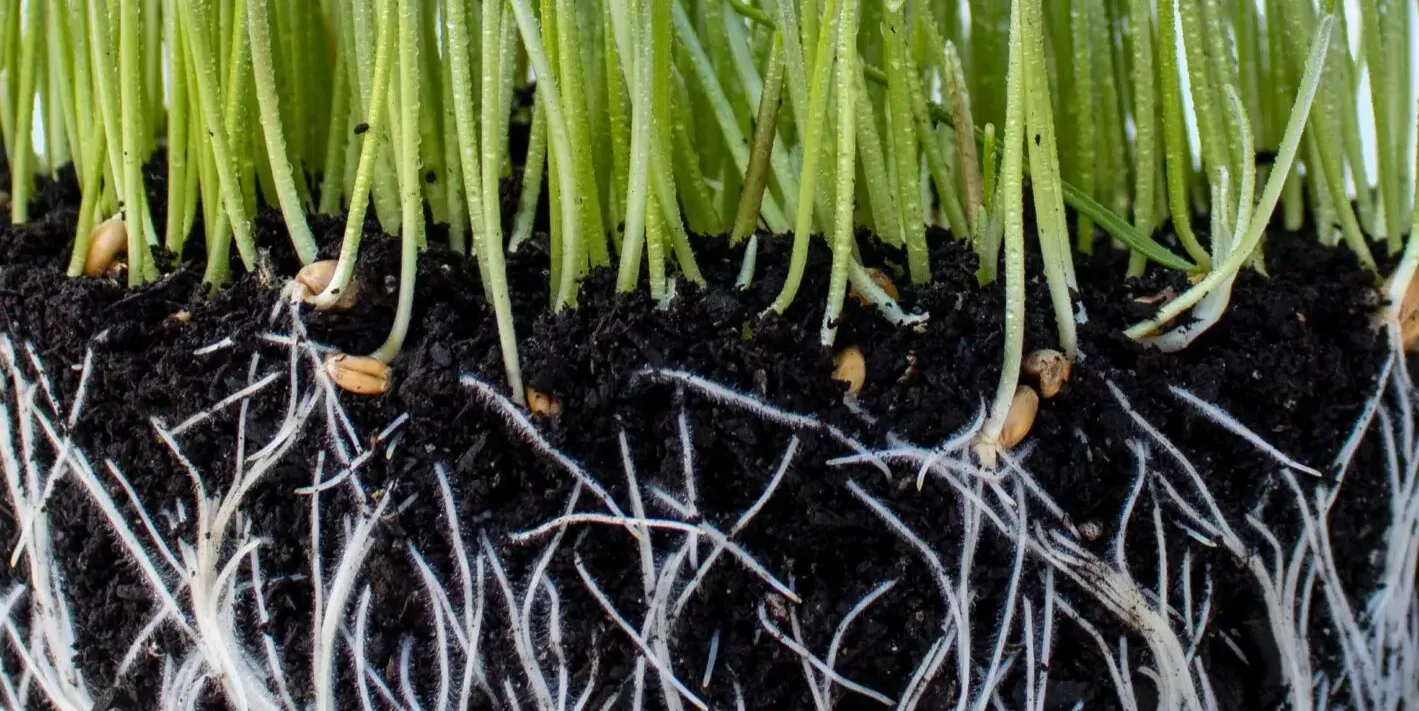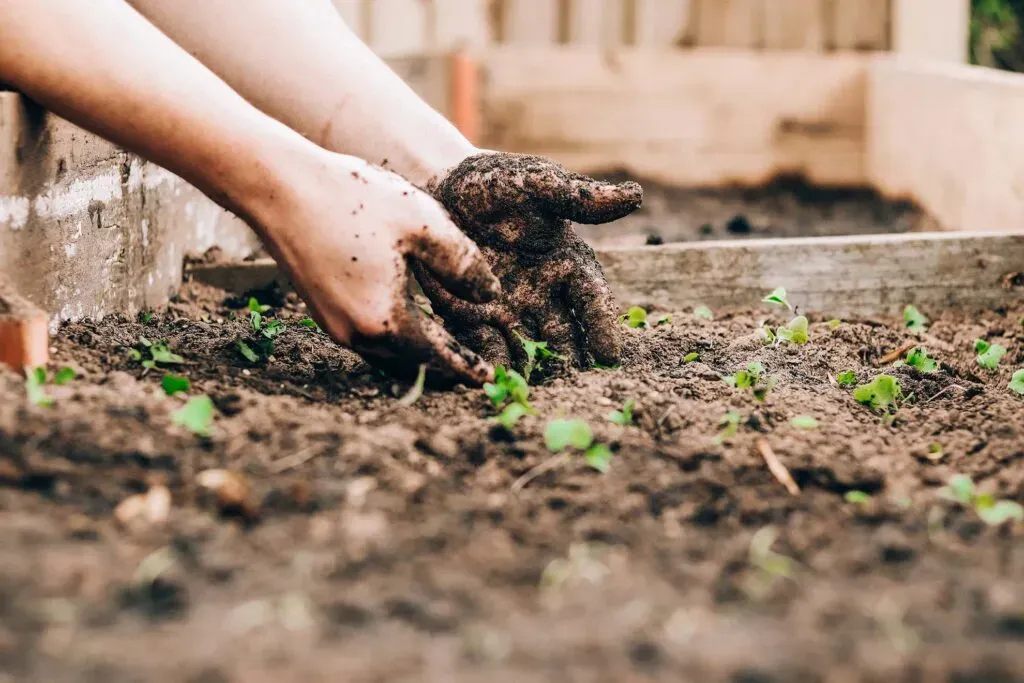The Ultimate Guide to Your Roots!
In this article we will tell you and provide you with all the information you need about roots. This is the Ultimate Guide about Roots.

In plants, roots are organs that anchor the plant in the ground and absorb water and nutrients from the soil. They are typically found underground and are usually not visible above the ground. Roots can be specialized for different functions, such as storage of nutrients, support, or reproduction. Some plants have deep roots that reach down into the soil to access water and nutrients, while others have shallow roots that grow close to the surface. The root system of a plant plays an important role in the overall health and growth of the plant.
Main functions of roots.
The main function of plant roots is to anchor the plant in the ground and absorb water and nutrients from the soil. Roots also provide support for the plant, helping it to remain upright and stable. In addition to these primary functions, roots can also perform a number of other important tasks. For example, some roots are specialized for storage of nutrients, such as carbohydrates, which the plant can use for energy during times of stress or dormancy. Other roots are adapted for reproductive purposes, such as the production of seeds or spores. Overall, the root system of a plant plays a vital role in the overall health and growth of the plant.

How roots are formed
Plant roots are formed from cells in the root meristem, which is a small group of actively dividing cells located near the tip of the root. As the plant grows, cells in the root meristem differentiate into different types of root tissue, such as root hairs, vascular tissue, and cortex. The arrangement of these tissues helps the root to absorb water and nutrients from the soil and transport them to other parts of the plant.
Root growth begins when a seed germinates and a small root, called the radicle, emerges from the seed. As the radicle grows, it begins to produce lateral roots, which branch off from the main root and grow in different di-rections. The root system of a plant can continue to grow and develop throughout the plant’s life, adapting to the availability of resources in the soil and the plant’s changing needs.
For how long do roots grow?
Roots will continue to grow as long as the plant is alive and healthy. In some plants, the root system can contin-ue to develop and expand throughout the plant’s lifetime, adapting to the availability of resources in the soil and the plant’s changing needs. For example, a tree may have a deep, extensive root system that grows over time to support its increasing size and weight. Other plants, such as annuals, may have a more shallow and less extensive root system that grows for a single season before the plant dies.
The rate of root growth can vary depending on a number of factors, including the species of plant, the age of the plant, and the availability of water and nutrients in the soil. In general, roots tend to grow more quickly in warm, moist conditions, and more slowly in cold, dry conditions. Some plants, such as root vegetables like carrots and turnips, are specifically grown for their edible roots, which can be harvested when they reach a certain size.

Repotting
Repotting a plant can be a delicate process, particularly if you want to focus on the roots. Here are some general guidelines for repotting plants and focusing on their roots:
- Water the plant thoroughly a few days before repotting to make it easier to remove from its current pot.
- Gently remove the plant from its pot, being careful not to damage the roots. If the plant is particularly large or difficult to remove, you may need to use a knife to carefully loosen the root ball.
- Inspect the roots to see if they are crowded or damaged. If the roots are tightly packed or appear to be struggling, you may need to gently loosen them before repotting.
- Choose a new pot that is slightly larger than the old one, with drainage holes in the bottom. Fill the pot with fresh potting soil.
- Place the plant in the new pot, being careful to spread the roots out evenly. Add more soil as needed to cover the roots.
- Water the plant well to help settle the soil and encourage the roots to grow.
- Keep the soil moist but not waterlogged, and place the plant in a location with the appropriate amount of light and temperature for its needs.
By following these steps, you can carefully repot your plant and focus on its roots to ensure that it has the best chance of thriving in its new pot.
Important things to keep roots healthy
Here are some tips for keeping your plant’s roots healthy:
- Use the right soil: Choose a potting soil that is well-draining and appropriate for the type of plant you are growing. Overly wet or poorly draining soil can lead to root rot, while soil that is too dry or nutrient-poor can stunt root growth.
- Water regularly: Water your plant regularly, but be sure to avoid over-watering. Too much water can lead to root rot, while not enough water can cause the plant to become stressed and its roots to dry out.
- Provide adequate drainage: Make sure your plant’s pot has drainage holes to allow excess water to drain away from the roots. Standing water around the roots can lead to root rot.
- Fertilize as needed: Use a balanced fertilizer to provide your plant with the nutrients it needs to grow and stay healthy. Follow the instructions on the label for the appropriate amount and frequency of fer-tilization.
- Prune roots as needed: If your plant’s roots become overcrowded, you may need to prune them to al-low the plant to continue growing properly. Be sure to use a clean, sharp tool and handle the roots gen-tly to avoid damaging them.
- Provide the plant additional nutrients. This makes sure that your plant has access to all the essential nutrients it needs and, most important, in the right amounts.
What happens when roots are unhealthy?
If a plant’s roots are unhealthy, it can affect the overall health of the plant. Some possible consequences of un-healthy roots include:
- Stunted growth: Unhealthy roots may be unable to absorb the water and nutrients that the plant needs to grow and thrive. As a result, the plant may grow more slowly or stop growing altogether.
- Poor flowering or fruiting: Plants that are struggling due to unhealthy roots may also have poor flower-ing or fruiting. This is because the plant may not have the energy or resources it needs to produce flow-ers or fruit.
- Increased susceptibility to pests and diseases: Unhealthy plants may be more vulnerable to pests and diseases, as their immune systems may be weakened.
- Plant death: In severe cases, unhealthy roots can cause a plant to die. This may be due to a lack of wa-ter and nutrients, or to root rot or other root-related issues.
By taking good care of your plant’s roots, you can help ensure that it remains healthy and vigorous.
How to prevent unhealthy roots?
One way to prevent unhealthy roots is to ensure that your plant is getting the right amount of water. Here’s a story to illustrate this point:
Anna loved her new houseplant, a beautiful fiddle leaf fig that she had placed in a sunny corner of her living room. She watered it every week, making sure to give it plenty of water so that the soil was always moist. However, after a few weeks, Anna noticed that the leaves of her fiddle leaf fig were starting to turn yellow and fall off.
Anna wasn’t sure what was going on, so she did some research and learned that fiddle leaf figs prefer well-draining soil and should only be watered when the top inch or so of soil is dry. She realized that she had been overwatering her plant, and the excess water was causing the roots to become waterlogged and eventually rot.
Anna quickly took action to correct the problem. She removed the plant from its pot and trimmed off any dis-eased or damaged roots. She then repotted the plant in fresh, well-draining soil and watered it only when the top inch of soil was dry. Within a few weeks, the leaves of Anna’s fiddle leaf fig began to return to their healthy, green color, and the plant was once again thriving.
By being mindful of the watering needs of her plant and taking action to correct the problem when she noticed something was wrong, Anna was able to prevent unhealthy roots and keep her fiddle leaf fig healthy.
In short, research your plant’s needs and make sure you follow that information. Not all plants need the same amount of water or sunlight.

How can I check the root system of my plant?
- Carefully remove the plant from its pot: One way to check the root system of your plant is to carefully remove it from its pot. Be sure to handle the plant gently and try not to disturb the roots too much. Once you have removed the plant from the pot, you can examine the roots to see if they are healthy and growing properly.
- Check for root growth through the drainage holes: If you don’t want to disturb the plant by removing it from its pot, you can check for root growth by looking through the drainage holes in the bottom of the pot. This can give you a good idea of the overall health and size of the root system.
- Use a transparent pot: Another option is to use a transparent pot when planting your plant. This will al-low you to see the roots as they grow, without disturbing the plant by removing it from its pot.
By using one of these methods, you can get a good idea of the health and growth of your plant’s root system. This can help you determine if the plant is getting the water and nutrients it needs, and whether it may be time to repot the plant into a larger pot.
Extra Tips & Tricks
Here are 10 additional tips for taking care of your plant’s roots:
- Choose the right pot size: It’s important to use a pot that is the appropriate size for your plant. A pot that is too small can lead to overcrowded roots, while a pot that is too large can result in excess water and soil that stays too wet, which can lead to root rot.
- Avoid over-fertilizing: While it’s important to provide your plant with the nutrients it needs to grow, over-fertilizing can lead to excessive foliage growth at the expense of root growth.
- Use a potting mix specifically formulated for the type of plant you are growing: Different plants have different soil requirements. Using a potting mix that is specifically formulated for the type of plant you are growing can help ensure that the plant’s roots have access to the right nutrients and moisture.
- Don’t let the plant sit in standing water: Be sure to drain any excess water from the pot after watering, as letting the plant sit in standing water can lead to root rot.
- Avoid planting too deeply: When planting your plant, be sure to follow the recommended planting depth and avoid planting too deeply. If the plant is planted too deeply, it can lead to a reduced root sys-tem and reduced plant growth.
- Provide adequate light: Adequate light is important for plant growth, including root growth. Make sure your plant is getting the right amount of light for its needs.
- Don’t let the plant dry out: Allowing your plant to dry out can stress the plant and damage the roots. Be sure to water the plant regularly, but avoid over-watering.
- Avoid using pesticides near the roots: Pesticides can be harmful to plant roots, so be sure to use them sparingly and avoid applying them near the roots.
- Don’t let the plant become root-bound: If your plant becomes root-bound, meaning that the roots have become crowded and tangled in the pot, it can be difficult for the plant to absorb water and nutrients. Repot the plant into a larger pot if necessary to allow the roots room to grow.
- Use mulch: Mulching around your plant can help to conserve moisture in the soil and keep the roots cool, which can be beneficial for plant growth. Just be sure to keep the mulch a few inches away from the base of the plant to prevent excess moisture from accumulating around the roots.
Article shared courtesy of Dutchpro! Check out their great products by clicking here
Store Links
We will get back to you as soon as possible
Please try again later
Follow Us
Quick Links
Contact Information
Follow Us
Opening Hours
Monday-Friday: 10AM-5PM
© Emporium Hydroponics 2022. All Rights Reserved.

